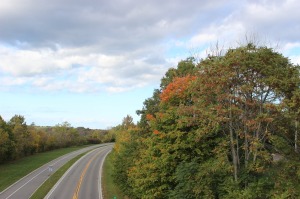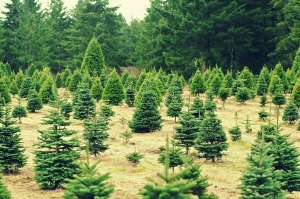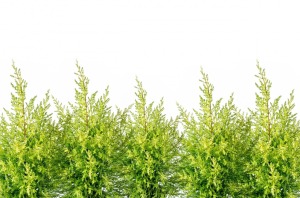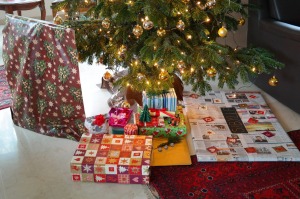Christmas isn’t all about buying gifts and parties, it’s about caring and sharing, whatever little or much that we have. It is also the time to care about our fellow citizens of the world and think of them as our families while having a good time with our own family. When you think of the world in this way, you will come to realize that everything we do in our everyday life has an impact on the globe, and it’s not just Christmas, it’s all our every day daily lives. When we live an eco-friendly lifestyle, we automatically reduce our impacts, and together, it becomes a huge positive shift towards sustainability. The green movement starts with you.
What are the environmental impacts of Christmas?
 So, how can a festival which is celebrated globally every year, have a negative impact on the globe? Well just like any other human activity, this festival also has an impact on the planet because of the things that we traditionally do during the Christmas holidays.
So, how can a festival which is celebrated globally every year, have a negative impact on the globe? Well just like any other human activity, this festival also has an impact on the planet because of the things that we traditionally do during the Christmas holidays.
There are several things that we are going to be doing for Christmas as a tradition. We know that people will decorate houses, buy gifts, throw parties, and maybe travel a bit to visit their parents, friends or family members, so all these activities will require spending money and energy. We will be having a good time, but as a result we will also be burning fossils and adding carbon dioxide into the atmosphere.
Moving towards a sustainable Christmas
To be sustainable means a great deal of things to a great deal of people. In this article we are going to give you a list of negative impacts and how you can minimize these and shift towards sustainable Christmas, so keep reading:
Christmas trees
 Christmas trees are going to be a major concern for environmentalists. Christmas trees have been the center of controversy among many of the environmental groups for a period of time. Questions have been raised whether to buy fake trees or is it better to buy real Christmas trees? But the question still remains, “is buying Christmas trees bad for the environment?” What type of Christmas trees should you buy to reduce the negative environmental impacts the most?
Christmas trees are going to be a major concern for environmentalists. Christmas trees have been the center of controversy among many of the environmental groups for a period of time. Questions have been raised whether to buy fake trees or is it better to buy real Christmas trees? But the question still remains, “is buying Christmas trees bad for the environment?” What type of Christmas trees should you buy to reduce the negative environmental impacts the most?
Millions of families around the world buy Christmas trees and decorate their living rooms in December every year, with both real and fake Christmas trees. The National Christmas Tree Growers Association claims that there will be more than 28 million Christmas trees sold in the United States this year, generating a sale of over $1 billion (Are Christmas trees bad for the environment? – The Week). No matter what type of Christmas tree you buy, you have to spend some energy and burn fuel to get it.
Fake VS. Real Christmas trees
 Both the real Christmas tree and fake Christmas tree industries have been advertising their own products and there has been a lot of confusing data out there. However, the real story is often left uncovered.
Both the real Christmas tree and fake Christmas tree industries have been advertising their own products and there has been a lot of confusing data out there. However, the real story is often left uncovered.
“National Christmas Tree Association, which launched a vigorous anti-fake-tree offensive when real-tree sales fell precipitously in 2004. And that came in response to reactionary propaganda from the fake-tree industry.” – (The Week)
Here is what we do know. When we use a real tree instead of a fake tree, the carbon emission is cut down almost by two thirds. Both real and fake trees will end up in the landfill, but the fake trees are made with a polymer. The PVC (polyvinyl chloride), “which produces carcinogens during manufacturing and disposal” and plastic trees are not biodegradable.
Weather.com says in an article titled: Real vs. Fake Christmas Trees: Which is Better for the Environment?, that it doesn’t really make a bid difference whether or not you buy a fake tree or a real tree, “Rather, what matters is how far you drive to get your evergreen, how you dispose of it and how long you use the artificial tree.” Basically the major concern is not what type of tree you have, but what you do with the tree, how you go to get it and how you dispose of it when you are done.
Your best options for Christmas trees
- Buy Christmas trees from a local farm
- Drive as little as possible to buy traditional cut trees
- Save and try to reuse your tree from last year if you have a plastic tree.
- Buy live trees and replant them after Christmas.
Celebrate a no impact Christmas
 Is it possible to celebrate a no impact Christmas? You could certainly try. Almost one-sixth of all American retail sales occur during the Christmas holidays and as a consequence the national consumption of resources also increases during the holidays. You can actually enjoy a meaningful Christmas with your friends and family if you spend less and use fewer resources. After all, Christmas was meant to be an occasion for sharing and caring for each other.
Is it possible to celebrate a no impact Christmas? You could certainly try. Almost one-sixth of all American retail sales occur during the Christmas holidays and as a consequence the national consumption of resources also increases during the holidays. You can actually enjoy a meaningful Christmas with your friends and family if you spend less and use fewer resources. After all, Christmas was meant to be an occasion for sharing and caring for each other.
Share your Christmas dinner
Invite as many friends and family members as possible to your Christmas dinner. It would save energy to cook and heat one home for several families rather than cooking at several homes. Prepare the right amount of food, and avoid wastage.
Buy useful gifts
Buy gifts that are eco-friendly and something that your friends and family can use. If gifts are not used and thrown in the landfill, it adds to the global impact. Buy local and buy green products.
Recycle and reuse
 The greatest gift that you can offer to the Mother Nature is the gift of sustainability. Try reusing your packaging materials, decorations, energy saving holiday lights and everything else you can. Separate and recycle all your household waste.
The greatest gift that you can offer to the Mother Nature is the gift of sustainability. Try reusing your packaging materials, decorations, energy saving holiday lights and everything else you can. Separate and recycle all your household waste.
We would encourage you to make this a Green Christmas this year. If we all do our share, we can all reduce a significant amount of negative impact on the globe. We wish you all a Sustainable Merry Christmas!
P.S: – What is your idea of a low impact Green Christmas? Please add your thoughts in the comment box below?
Source: Environmental Professionals Network
Related articles & Resources:
- 4 Ways to Make it a Green Christmas This Year | Nourish The Planet
- Are Christmas trees bad for the environment? – The Week
- Real vs. Fake Christmas Trees: Which is Better for the Environment? – weather.com
- How to have a Green Christmas – Eartheasy.com Solutions for Sustainable Living
- Energy-Efficient Holiday Decorating Tips | Department of Energy



